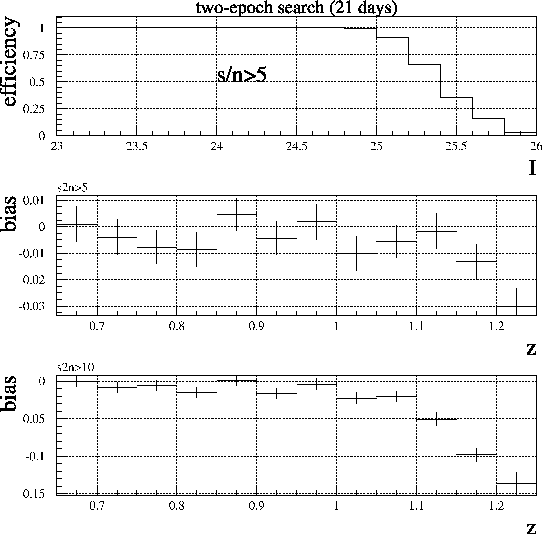Fault of time, the complete study of the effects of bias of Malmquist was not carried out in a systematic way for all the supernovæ. We present here the study which was made in the case of 2001gn discovered to the CFHT.
Figure 10.26
shows, for an effectiveness of detection close to the effectiveness
noted at the time of this research campaign (reproduced in top of the
figure), bias to the measure for 2 value of cut in signal on noise. The
first with ![]() represents the value used at the time of research; for a supernova with
a redshift of 1.1, bias lower than 0.01 magnitude, and
thus lower than the percent. For the closer supernovæ, this bias will
be even weaker. The second value with
represents the value used at the time of research; for a supernova with
a redshift of 1.1, bias lower than 0.01 magnitude, and
thus lower than the percent. For the closer supernovæ, this bias will
be even weaker. The second value with ![]() corresponds to the cut which was applied in fact at the time of the
spectroscopic identification taking into account the limits of the Keck
instrument. In this case, for a supernova with a shift of
corresponds to the cut which was applied in fact at the time of the
spectroscopic identification taking into account the limits of the Keck
instrument. In this case, for a supernova with a shift of ![]() , bias is approximately 0.04 magnitude i.e. 4%. For supenovæ with redshifts lower than 1 bias is negligible.
, bias is approximately 0.04 magnitude i.e. 4%. For supenovæ with redshifts lower than 1 bias is negligible.
The bias of Malmquit is thus negligible for our supernovæ with a shift towards the red lower than 1 and limited to 4% for our most remote supernova.
 |